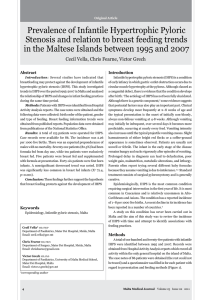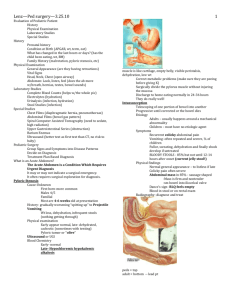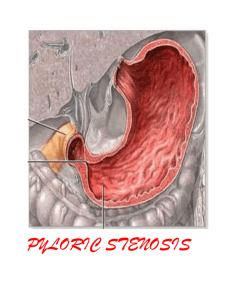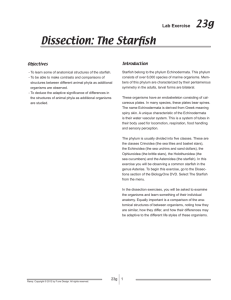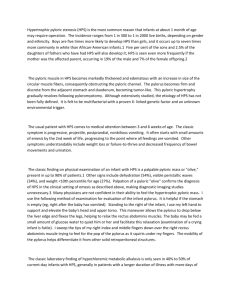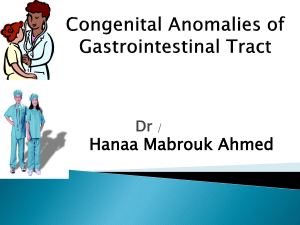incision diagnosis
advertisement
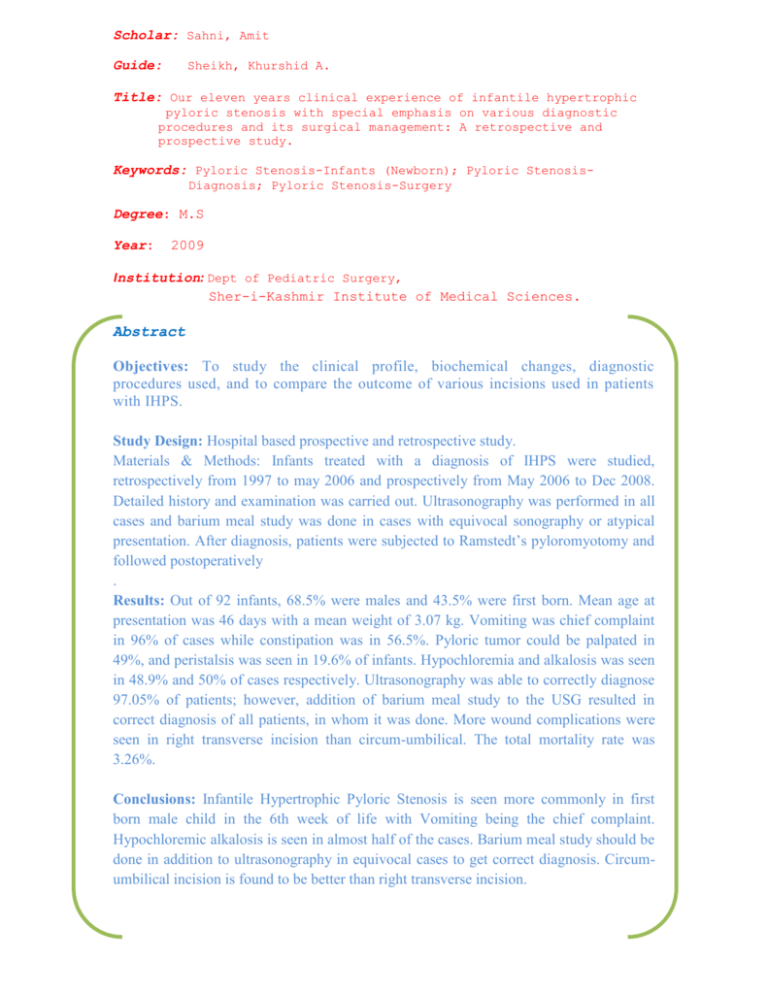
Scholar: Sahni, Amit Guide: Sheikh, Khurshid A. Title: Our eleven years clinical experience of infantile hypertrophic pyloric stenosis with special emphasis on various diagnostic procedures and its surgical management: A retrospective and prospective study. Keywords: Pyloric Stenosis-Infants (Newborn); Pyloric StenosisDiagnosis; Pyloric Stenosis-Surgery Degree: M.S Year: 2009 Institution: Dept of Pediatric Surgery, Sher-i-Kashmir Institute of Medical Sciences. Abstract Objectives: To study the clinical profile, biochemical changes, diagnostic procedures used, and to compare the outcome of various incisions used in patients with IHPS. Study Design: Hospital based prospective and retrospective study. Materials & Methods: Infants treated with a diagnosis of IHPS were studied, retrospectively from 1997 to may 2006 and prospectively from May 2006 to Dec 2008. Detailed history and examination was carried out. Ultrasonography was performed in all cases and barium meal study was done in cases with equivocal sonography or atypical presentation. After diagnosis, patients were subjected to Ramstedt’s pyloromyotomy and followed postoperatively . Results: Out of 92 infants, 68.5% were males and 43.5% were first born. Mean age at presentation was 46 days with a mean weight of 3.07 kg. Vomiting was chief complaint in 96% of cases while constipation was in 56.5%. Pyloric tumor could be palpated in 49%, and peristalsis was seen in 19.6% of infants. Hypochloremia and alkalosis was seen in 48.9% and 50% of cases respectively. Ultrasonography was able to correctly diagnose 97.05% of patients; however, addition of barium meal study to the USG resulted in correct diagnosis of all patients, in whom it was done. More wound complications were seen in right transverse incision than circum-umbilical. The total mortality rate was 3.26%. Conclusions: Infantile Hypertrophic Pyloric Stenosis is seen more commonly in first born male child in the 6th week of life with Vomiting being the chief complaint. Hypochloremic alkalosis is seen in almost half of the cases. Barium meal study should be done in addition to ultrasonography in equivocal cases to get correct diagnosis. Circumumbilical incision is found to be better than right transverse incision.


